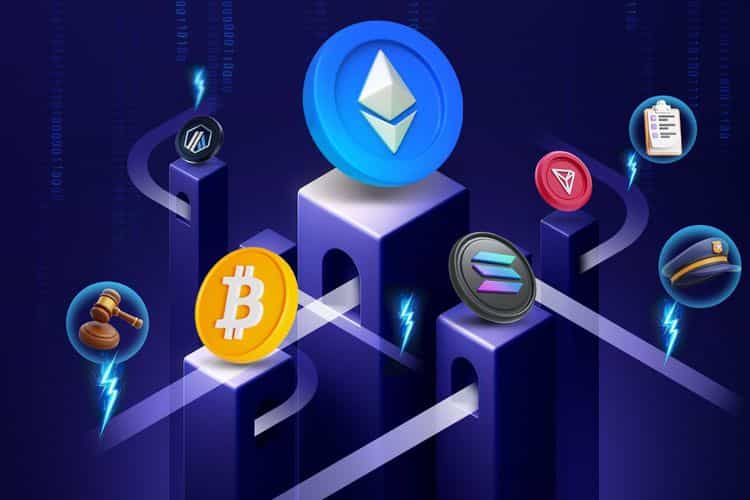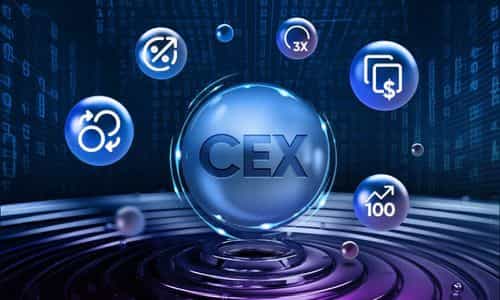Do Cross-Chain Aggregators Require Regulatory Approvals?


Cross-chain aggregators have become vital tools for enabling seamless interaction between different blockchain networks. These platforms enable the seamless transfer of assets across multiple blockchains, eliminating the need for intermediaries and allowing users to exchange assets or interact with various ecosystems. But as with all new financial technologies, the question arises: Do cross-chain aggregators need regulatory approval? In this article, we’ll explore how cross-chain aggregators function, the regulatory challenges they face, and the possible need for regulatory approvals.
What Are Cross-Chain Aggregators and How Do They Function?
Cross-chain aggregators are decentralized platforms that enable users to perform transactions between different blockchain networks. These platforms gather liquidity from multiple sources like decentralized exchanges (DEXs) and liquidity pools across various blockchains, allowing users to trade assets with minimal slippage and lower transaction costs.
Key Features of Cross-Chain Aggregators:
Platforms like Rango Exchange are excellent examples of cross-chain aggregators. By ensuring low transaction fees and offering high liquidity, they aim to make cross-chain trading easier, faster, and more secure.
Regulatory Challenges Facing Cross-Chain Aggregators
While cross-chain aggregators offer significant benefits, they also face numerous regulatory challenges. These challenges are primarily due to their decentralized nature and the complexity of regulating financial transactions across borders.
Why Governments Are Concerned About Cross-Chain Transactions
Governments and regulators are concerned about the growing popularity of cross-chain aggregators for several reasons:
How Regulatory Uncertainty Affects Cross-Chain Liquidity Providers
Liquidity providers (LPs) play a crucial role in maintaining the liquidity of cross-chain platforms. These individuals or entities contribute assets to liquidity pools that facilitate transactions on the aggregator. However, the regulatory uncertainty surrounding these platforms poses risks for LPs, including:
Do Cross-Chain Aggregators Need Regulatory Approvals?
The answer to whether cross-chain aggregators need regulatory approval depends on geography and how the aggregator operates. While some regions are already moving toward more comprehensive regulation, others have yet to establish clear rules for decentralized finance platforms.
Regulatory Requirements by Region:
However, due to the decentralized nature of cross-chain aggregators, it can be difficult for regulators to pinpoint who is responsible for compliance. This creates an issue of jurisdiction: Where does responsibility lie? Is it with the platform operator, liquidity providers, or users?
Example: Rango Exchange
Platforms like Rango Exchange operate in a decentralized manner, yet they are designed with user privacy and transparency in mind, and are worldwide regulatory-compliant. While regulatory approval is typically enforced through mechanisms such as blocking sanctioned areas or cooperating with third-party services to prevent transactions from wallets linked to hacks, the platform ensures compliance using best practices that fully preserve user privacy in a decentralized environment. Moreover, Rango is non-KYC and has been audited multiple times, making it easier for users to trust the system and engage in cross-chain transactions.
Potential Regulatory Frameworks for Cross-Chain Aggregators
As the popularity of cross-chain aggregators grows, several regulatory frameworks have been proposed. These frameworks aim to provide clear guidance on how these platforms should operate within the existing legal frameworks.
Key Regulatory Elements:
KYC (Know-Your-Customer): Cross-chain platforms may need to implement KYC procedures to verify the identities of their users and prevent illegal activities.
AML (Anti-Money Laundering): Platforms may be required to monitor transactions for suspicious activity, ensuring that they do not facilitate money laundering or terrorism financing.
Balancing Innovation and Regulation in Cross-Chain Finance
The challenge for regulators is to strike the right balance between encouraging innovation and ensuring consumer protection. While regulatory frameworks are essential to safeguard users and maintain market integrity, over-regulation could stifle innovation, preventing the growth of DeFi platforms and the broader blockchain ecosystem.
Regulators will need to:
To Sum Up
Cross-chain aggregators are a revolutionary force in decentralized finance, allowing for seamless interaction between multiple blockchain networks. However, their decentralized nature and cross-border functionalities pose significant regulatory challenges.
While regulatory approval may not be required in every region, platforms operating in jurisdictions with clearer crypto regulations may need to comply with standards set by authorities. Balancing innovation and regulation is crucial for the future of cross-chain aggregators, as too much regulation could impede growth, while too little could expose users to significant risks.
Resources
Frequently asked questions
Check out most commonly asked questions, addressed based on community needs. Can't find what you are looking for?
Contact us, our friendly support helps!
What is a cross-chain aggregator?
A cross-chain aggregator is a platform that allows users to swap or trade assets across different blockchain networks. It aggregates liquidity from multiple decentralized exchanges (DEXs) to offer better trading rates and minimize slippage.
Do cross-chain aggregators need to comply with regulations?
Yes, depending on the jurisdiction, cross-chain aggregators may need to comply with KYC, AML, and other financial regulations to ensure consumer protection and market integrity.
What risks do cross-chain aggregators pose to users?
The main risks of cross-chain aggregators include smart contract vulnerabilities, regulatory uncertainty, and potential fraud. That said, true market manipulation isn’t possible in decentralized systems, as no single party controls pricing or execution.




